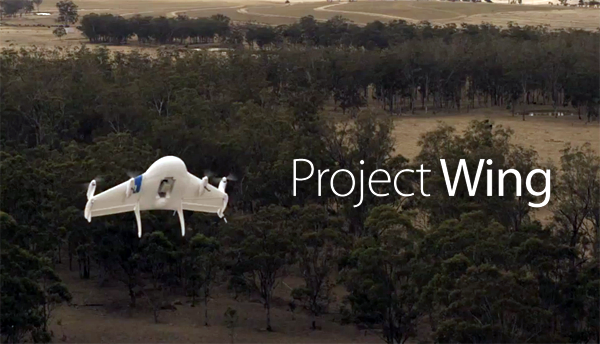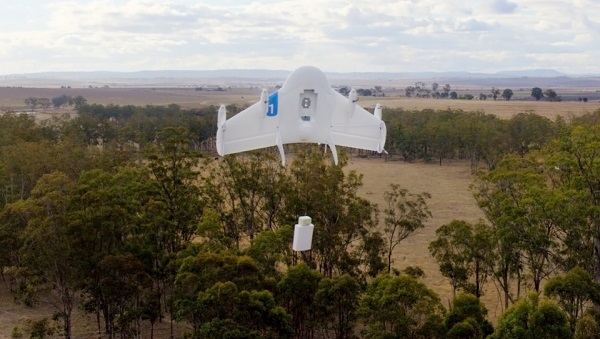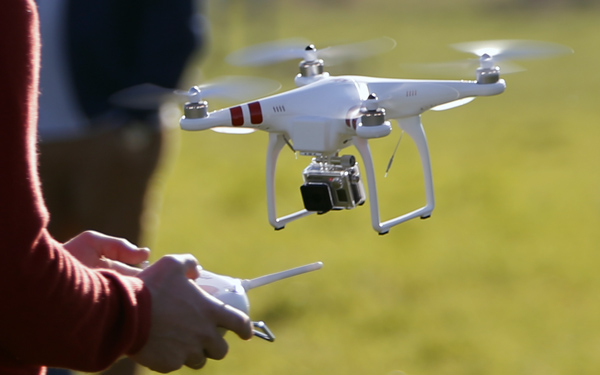For all the twists and turns Google’s “Project Wing” drones are able to perform up in the air, the legal maneuvers the company is pulling in order to bypass federal regulations and freely test its unmanned aerial vehicles (UAVs) in US airspace are even more impressive.

The tech company has quietly been testing its drone delivery program in US airspace for the last 12 months, and will continue to do so for the foreseeable future in rural California as part of a deal with NASA.
This is all according to the Guardian, which is also reporting that within the documents it obtained, Google’s drones weigh less than 55lbs, are able to reach speeds of up to 100MPH, and include default safety protocols should a drone ever lose contact with its operator.

The fact that Google is working on a product to rival that which Amazon has very publicly been working on is not necessarily news — in this day and age of research and development, it’s almost to be expected. What’s noteworthy from this story is how Google is going about testing out their new technology. You see, the US currently has an across-the-board ban on the commercial operation of UAVs. Companies that wish to fly their unmanned aircrafts in America’s skies need permission to do so from the Federal Aviation Administration (FAA). This can be an arduous, exhausting task for companies, as it takes time and also entails numerous requirements, including things like the company having a licensed pilot control the drone.

Google’s been able to get around these rules for the last year by flying its aircraft over private land as part of a deal it made with NASA. Specifically, they’re testing the technology out under NASA’s Certificate of Waiver or Authorization (COA), a program specially intended for government agencies. COAs allow public organizations like the military, universities, and police / fire departments to experiment with UAVs as long as they meet safety standards. There are some restrictions, though they’re nothing terribly limiting. For instance, the FAA states that a public agency must own or otherwise exclusively operate the drone being flown under the COA, and that it cannot be used as part of a commercial operation.
Now, the reason why Google has been able to do this so quietly for the last 12 months is because COAs are not routinely made public. This is in stark contrast to the way the FAA handles issuing out approvals to commercial companies, referred to as “333s” (which refers to the section of the FAA regulations to which UAV rules apply). It’s also why everyone knew about Amazon’s efforts with this type of technology — the company was issued a 333 exemption in April for R&D of its Prime Air delivery system.
All legal hurdling aside, the curious tech enthusiast obviously would like to know what Google is working on. Per documents filed with the FCC, the latest trials will see if cellphone signals can be used by low-flying drones for automatic air traffic control. Google plans to test this out on a remote stretch of privately owned land near Merced, California. During these experiments, which might last around six months or so, the company will test transmissions on the 4G and LTE radio frequencies using by all the major American-based cellphone companies.
While Google can still legally research its drone capabilities under NASA’s COA, it is working with the FAA on obtaining more formal approvals. The problem in going this route is that everything the company wants to do is published by the FAA. For instance, the Agency just posted the request Google made for a section 333 exemption last week, and included within that posting the fact that the company wants to use its drones to perform aerial data collection, and to conduct research and development missions. The post also had details about Google’s aircrafts for this exemption, including the fact that the drones weigh less than 55lbs, use multiple electric engines, can reach speeds up to 100MPH, and fly as high as 400 feet. Also detailed was the fact that if the drone loses communication with its operator, it will return to base and land immediately.
Applying for the exemption now, rather than a year ago, makes sense given this level of detail now being made public. 12 months ago, the company was at a point where R&D was more important, and that’s where NASA’s COA was particularly useful. Now that the technology has been worked on and fine-tuned, the company can now begin going public with its technological achievements and begin shifting focus to more practical commercial applications.
Going this route also allowed R&D to happen at a more natural pace — you see, it’s unlikely Google will receive their 333 exemption any time in the near future. Per an FAA representative speaking with the Guardian, the Agency is backlogged with approximately 1500 exemption requests. So, given the fact that the company has only just now filed for the exemption, it’s unlikely it’ll get the government’s approval to openly use US airspace any time soon.
Until then, Google still has NASA.
Read the full report at TheGuardian.com
Advertisement
Learn more about Electronic Products Magazine





